Fubar's GT Build
- Thread starter Fubar
- Start date
You are using an out of date browser. It may not display this or other websites correctly.
You should upgrade or use an alternative browser.
You should upgrade or use an alternative browser.
This water is strictly for the intercooler, not the motor. If I can get the intake temps down to 50 or even 80 deg, add 35lbs of boost and some race fuel... it should make a mile long stretch of runway disappear like magic.
Wwabbit
GT Owner
This water is strictly for the intercooler, not the motor. If I can get the intake temps down to 50 or even 80 deg, add 35lbs of boost and some race fuel... it should make a mile long stretch of runway disappear like magic.
I suppose at those MAP levels, mixture is pretty critical, so I guess your ECM and injectors will have to be pretty nimble if you are going to artificially effect intake air temp.
BlackICE
GT Owner
For the techies here, I am having a bit of a disagreement with Shawn, which I usually know better than attempting. However some outside input might prove useful. I think water should flow from the tank to the front heat exchanger and then to the intercooler. My thoughts are that this water will be the coldest. Shawn wants to set it up to flow from the tank to the intercooler, primarily for times when ice is used. Clearly the second method is best for use with a few bags of ice in the tank. I'm just wondering if it will be detrimental for everyday use or would the effect be minimal?
We will have several sensors setup in there and the data will eventually flesh itself out but I figured some of the racing engineers here have looked at similar problems? The piping is easy to move so this may be something we alter for race day. Thoughts?
Why not put some computer controlled valves in? Then with the sensors you can change the plumbing on the fly depending on what kind of driving are going to do.
Next question - that set-up looks awfully large. Where are you placing it in the car? Looks too big to fit in the trunk.
I thought the placement was clear, that item is (replaces the stock one) the large brace that fits between the rear shock pillars.
For the techies here, I am having a bit of a disagreement with Shawn, which I usually know better than attempting. However some outside input might prove useful. I think water should flow from the tank to the front heat exchanger and then to the intercooler. My thoughts are that this water will be the coldest. Shawn wants to set it up to flow from the tank to the intercooler, primarily for times when ice is used. Clearly the second method is best for use with a few bags of ice in the tank. I'm just wondering if it will be detrimental for everyday use or would the effect be minimal?
We will have several sensors setup in there and the data will eventually flesh itself out but I figured some of the racing engineers here have looked at similar problems? The piping is easy to move so this may be something we alter for race day. Thoughts?
View attachment Mark.pdf
Guss I am "cludgy" at posting pictures. See attached pdf for a comment.
ultrasportracing
GT Owner
Which way does our pump work, does it push or suck, ie suck the water out of the radiator, and push it through the system, or vice versa
Wwabbit
GT Owner
The pump is primed by the degas bottle and pumps thru the block to the radiator and back to the bottle. Heater circuit is tied in their too along the way.
MoTeC Magic
Spectator
Hi Guys,
The stock pump pulls from the IC water tank (degas tank) in the engine compartment, it then pushes through the front heat exchanger, then to the intercooler heat exchanger in the intake, then back to the degas tank.
The problem with the way it is shown in the attachment is the ice water gets heated up when it goes through the front heat exchanger prior to going to the IC.
When trying to make max power, we want ice water and we would like it as cold as possible. Target air temps and what we achieve on our pro turbo drag applications is 50F inlet temps into the motor at 45-55 psi boost. This requires cold water, at high flow values, and a direct path from the ice to the IC.
We have designed the new water system:
-Capacity of about 10 gallons
-We have drastically reduced engine temps in Mark's GT... about 100F (mainly due to the Inconel exhaust shields... therefore not much heat back there adding heat to the water)
-We will be constantly flowing IC water with a 55gpm rear pump pushing through the IC and a 55gpm front pump in the stock location pulling and then pushing through the stock front heat exchanger to cool the water back down and send it back to the tank.
-The new tank has 1/4" phenolic spacers between the frame and ice water tank for heat isolation as well
-The supercharger is not throttled in our build. Because of this, the supercharger is constantly moving air across the external IC core and out of our blow off valves. This causes the IC to act as a radiator, expelling heat from the water when not in boost.
All of this leads me not to worry about the fact that we are pulling water from the water tank and pushing through the IC first and then to the front heat exchanger to cool it off before returning it back to the tank.... because the water is going to be very close to ambient. The stock IC pump only turns on with elevated air temp. We will be running water constantly… not allowing the water to heat soak.
A ton of thought and engineering has gone into this project, I and a full time in house engineer of mine has over 2 straight months just in CAD design for the system, not to mention all of the back and fourths with measurements and parts in and out of the car check fitting and measuring everything ... far more time and revisions have been invested than most will appreciate. There is little room back there and are we are packing 10lbs in a 5lb sack. Everything crashes and had to be addressed to fit correctly in the GT.
It has been designed to allow us to "play with the plumbing"... including eliminating the front circuit when on ice water. Drain valves are built in, two different temp sensors are incorporated in the water system... etc, etc, etc...
We are done with our engineering, the final design in CAD has be set, and we are in the phase of building and machining components (juggling and sharing time with other shop projects, our core is professional motorsports). We have held and are still holding the release of the final design to the viewing crowd. We have chosen to slowly unveil what we are doing as we produce the parts. To say we are happy with what we have come up with is an understatement... we are quite pleased and believe most will like what we have come up with.
That said... you've already seen some of the parts of the tank... so here is the model so it makes sense.
Below is an image of the CAD model for the tank. It is the final design of the water tank. Last image is the jig fixture we built for welding the new tank to minimize warping during the welding process.
Cheers
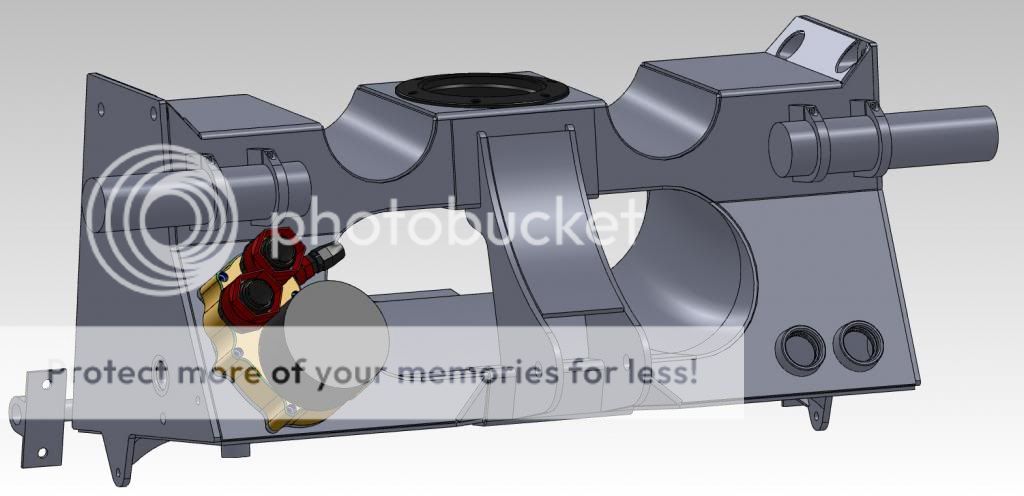
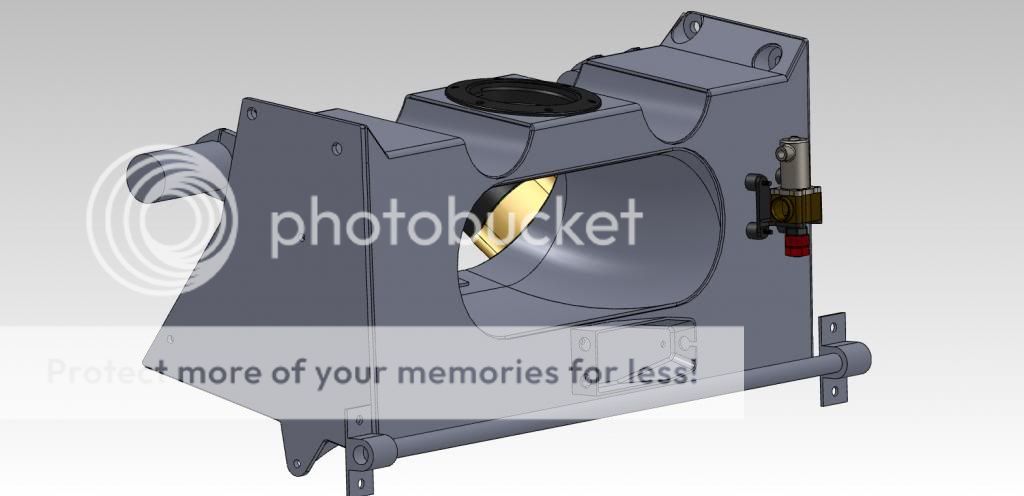
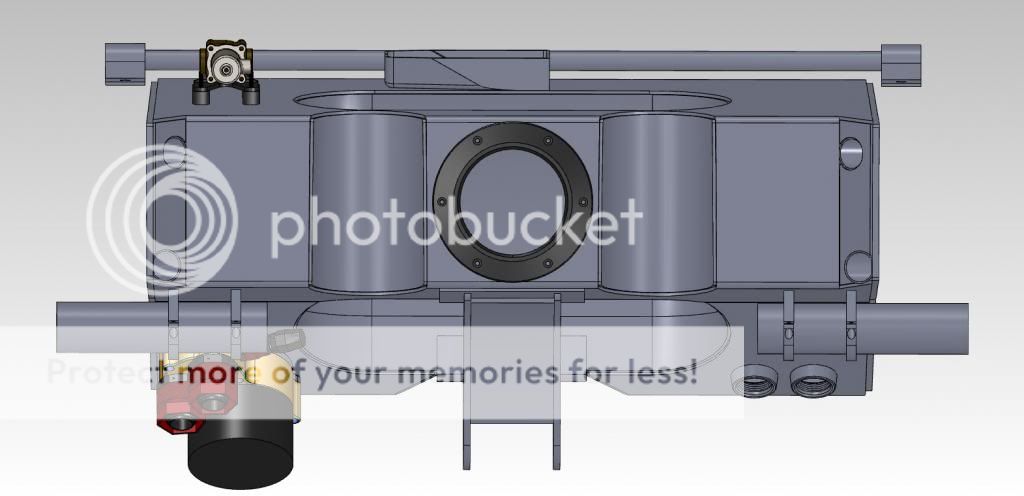
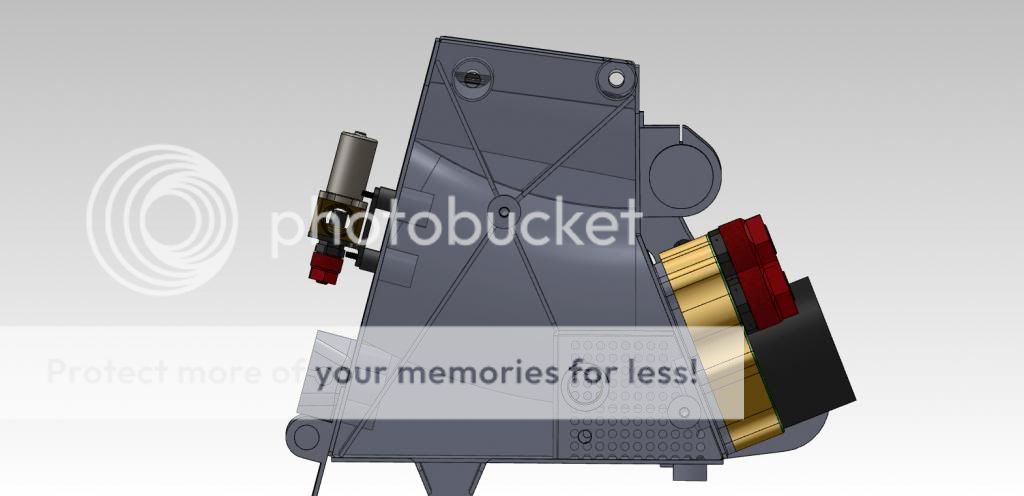
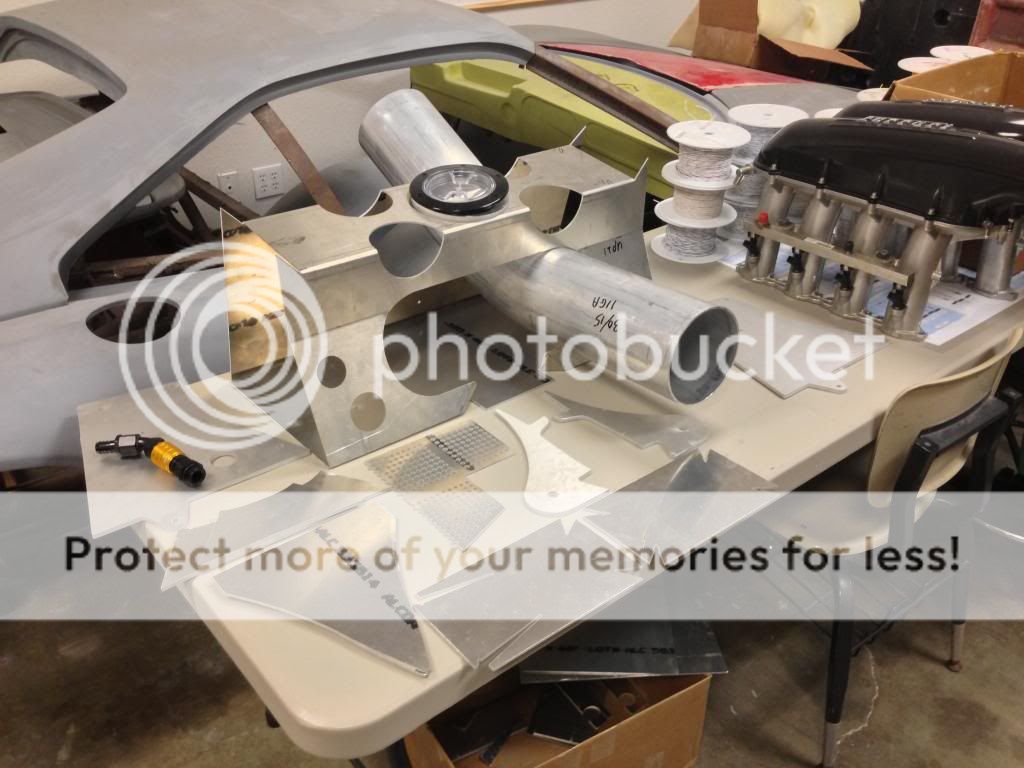
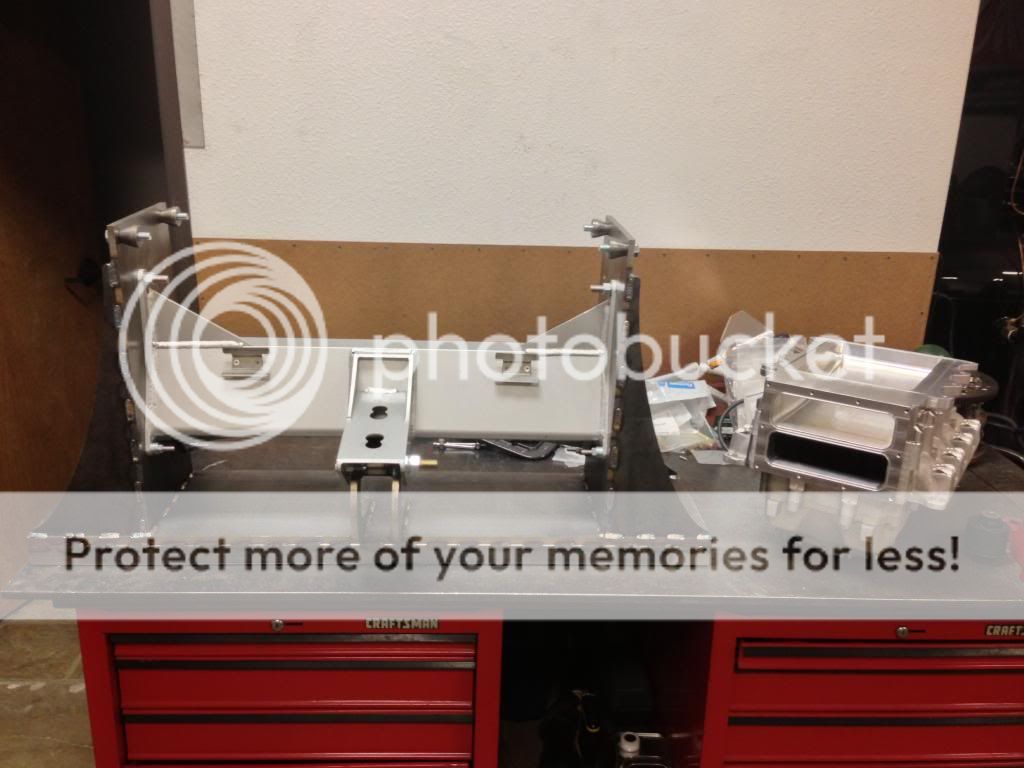
MoTeC Magic
Spectator
FUBAR, that wouldn't happen to be your Ferrari 288 GTO in the shop as well??
PS... the GTO actually started life as a Ferrari 308. The 288 was designed off of the 308 and is almost an identical frame, back to the rear firewall. We have engineered a replacement rear frame that is accurate (measurements taken from two real 288's that belonged to our customers). We even made a press die to create accurate elliptical oval tubing for the frame. This sets the wheelbase to the correct dimensions and allows our 100% correct GTO body to be fitted. Other frame modifications are added... like wider frame rails, to be accurate... and integrated hidden cage.
Our preferred engine option is TT 430, are planning on 458s in the future, and or a 308 for those that want it to resemble more of a 288 engine. MoTeC engine management, race grade abs, traction control, etc. All MoTeC mil-spec race wiring... all modern running gear. Cars end up weighing about 2600-2800lbs depending on engine selection and accessories chosen.
Sorry for the side tracking on the subject of those less worthy "red cars"... Just wanted to clarify it isn't a "KIT CAR"... more of what we traditionally refer to as a tribute "re-body". It is still a Ferrari.
Cheers
Last edited:
Great post Shawn and as I told Mark, I agree with your engineering logic.
Mark, to answer your question of the IC system w/o ice, I would still favor Shawn's approach of routing IC water directly from the reservoir to the engine IC and then to the forward mounted heat exchanger. Again the goal of IC flow mapping is to deliver to the engine the coolest possible water temperature from which to extract induction air heat.
Forced convection whether across the engine mounted I/C or the front body mounted “convectionator” (radiator) is governed by the equation Q = (A)(Hc)(Tsurf – Tfluid). Where Q is the amount of heat (Btu’s) removed from the induction air, A is the surface area over which the heat can be removed, Hc is the convection heat transfer coefficient for the given heat exchanger, and for the IC proper Tsurf is the heat exchanger fin temperature and Tfluid is the induction air temperature. Thus per the equation, to maximize Q the heat removed from the induction air for a given I/C area (A) and heat exchanger heat transfer coefficient (Hc), you want the maximum “delta” temperature between the cooling fluid you pump through the IC and the engine induction air.
You appear to be in very good technical "hands" as your modifiers appear to really THINK about application/routing and the physics of your modifications. This all takes time and money to do correctly.
I look forward with anticipation to see the final product at (one of) our rally’s!
Mark, to answer your question of the IC system w/o ice, I would still favor Shawn's approach of routing IC water directly from the reservoir to the engine IC and then to the forward mounted heat exchanger. Again the goal of IC flow mapping is to deliver to the engine the coolest possible water temperature from which to extract induction air heat.
Forced convection whether across the engine mounted I/C or the front body mounted “convectionator” (radiator) is governed by the equation Q = (A)(Hc)(Tsurf – Tfluid). Where Q is the amount of heat (Btu’s) removed from the induction air, A is the surface area over which the heat can be removed, Hc is the convection heat transfer coefficient for the given heat exchanger, and for the IC proper Tsurf is the heat exchanger fin temperature and Tfluid is the induction air temperature. Thus per the equation, to maximize Q the heat removed from the induction air for a given I/C area (A) and heat exchanger heat transfer coefficient (Hc), you want the maximum “delta” temperature between the cooling fluid you pump through the IC and the engine induction air.
You appear to be in very good technical "hands" as your modifiers appear to really THINK about application/routing and the physics of your modifications. This all takes time and money to do correctly.
I look forward with anticipation to see the final product at (one of) our rally’s!
MoTeC Magic
Spectator
Thanks Indy!
You are absolutely correct... I should have stated in my post that you were right on the money with what you were stating... We agree anyway.
All the best!
You are absolutely correct... I should have stated in my post that you were right on the money with what you were stating... We agree anyway.
All the best!
Just curious, but why not use liquid nitrogen to cool the water? I would think that for the short time period the coldest temps are needed (i.e. racing), you could do better (i.e. colder) and have a much smaller reservoir. AND, if the guy your're racing starts to pull ahead, just shoot some out James Bond style and freeze his ass off.
I like the James Bond part. Shawn? ...I'm sure he can do it but it would take 6 years.
On a side note, the large take was a real added bonus for times when ice and race fuel arnt an option; the ten gallons on intercooler fluid should give me a solid two, maybe three pulls before IAT temps start to really trash the power. Sense those runs will probabley involve 93oct, and a sub 1000hp tune, I will need all I can get to be in the same boat as the twin screws.
On a side note, the large take was a real added bonus for times when ice and race fuel arnt an option; the ten gallons on intercooler fluid should give me a solid two, maybe three pulls before IAT temps start to really trash the power. Sense those runs will probabley involve 93oct, and a sub 1000hp tune, I will need all I can get to be in the same boat as the twin screws.
Frank poses an interesting question. But let’s look at the physics of the postulate.
Liquid nitrogen (LN2) boils (transforms from a liquid to a gas) at -321°F (-196°C) and since you want to cool off liquid water which is to be, after cooled, pumped through the I/C, you want to keep the nitrogen a liquid, thus a fluid temperature of lower than -321°F is necessary. Mark states he has a I/C tank capacity of 10 gallons.
I would imagine to cool the 10 gallons of I/C water some sort of “worm” heat exchanger (same thing moonshiners use or the old fuel line cool cans used) within the I/C tank would be necessary if you wanted to keep the nitrogen segregated from the water. I think if you just introduced or bubbled LN2 into the water the water immediately around the injection point would freeze immediately eventually creating a brick of ice effectively sealing off further introduction of LN2 into the I/C can.
If you were to circulate LN2 through a worm in the I/C tank, ice would immediately form on the outside of the worm surface getting thicker with time and “insulating” the worm from effectively pulling heat out of the water. Same effect if you introduced LN2 at the inlet of the worm and let it flash to a gas as it traversed the worm and a gas was dumped overboard. There is just too large a temperature difference between LN2 and the water to materially lower the temperature of 10 gallons of water.
And as an aside to lower the temperature of 10 gallons of water from an assumed ambient temperature of 80°F to say 40°F to go into the I/C, it would require the removal of 3,338 BTU’s of energy. Putting a time factor on how quickly the water cool down is to take place, to remove this heat in 60 minutes would require about 1.3 horsepower, 30 minutes = 39 horsepower and to cool 10 gallons of water a delta of 40°F in one minute would require about 79 horsepower.
Good question Frank, but IMO Mark should just stick with direct contact of the I/C fluid with ice. :wink
Liquid nitrogen (LN2) boils (transforms from a liquid to a gas) at -321°F (-196°C) and since you want to cool off liquid water which is to be, after cooled, pumped through the I/C, you want to keep the nitrogen a liquid, thus a fluid temperature of lower than -321°F is necessary. Mark states he has a I/C tank capacity of 10 gallons.
I would imagine to cool the 10 gallons of I/C water some sort of “worm” heat exchanger (same thing moonshiners use or the old fuel line cool cans used) within the I/C tank would be necessary if you wanted to keep the nitrogen segregated from the water. I think if you just introduced or bubbled LN2 into the water the water immediately around the injection point would freeze immediately eventually creating a brick of ice effectively sealing off further introduction of LN2 into the I/C can.
If you were to circulate LN2 through a worm in the I/C tank, ice would immediately form on the outside of the worm surface getting thicker with time and “insulating” the worm from effectively pulling heat out of the water. Same effect if you introduced LN2 at the inlet of the worm and let it flash to a gas as it traversed the worm and a gas was dumped overboard. There is just too large a temperature difference between LN2 and the water to materially lower the temperature of 10 gallons of water.
And as an aside to lower the temperature of 10 gallons of water from an assumed ambient temperature of 80°F to say 40°F to go into the I/C, it would require the removal of 3,338 BTU’s of energy. Putting a time factor on how quickly the water cool down is to take place, to remove this heat in 60 minutes would require about 1.3 horsepower, 30 minutes = 39 horsepower and to cool 10 gallons of water a delta of 40°F in one minute would require about 79 horsepower.
Good question Frank, but IMO Mark should just stick with direct contact of the I/C fluid with ice. :wink

